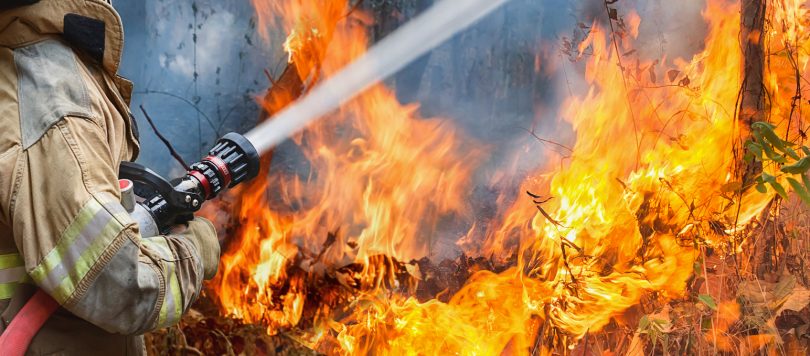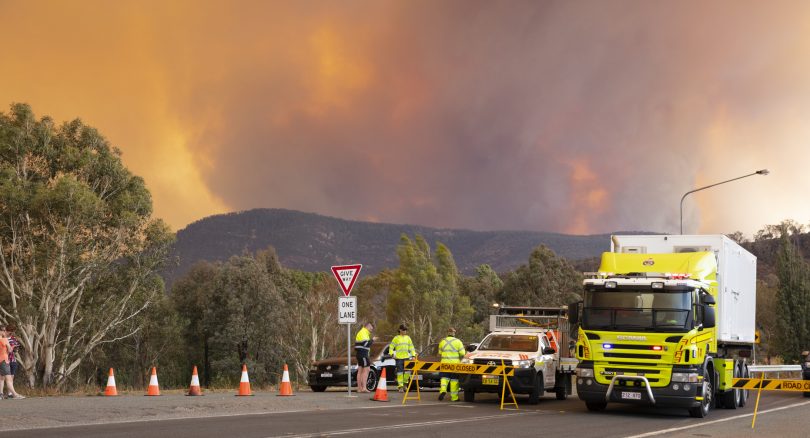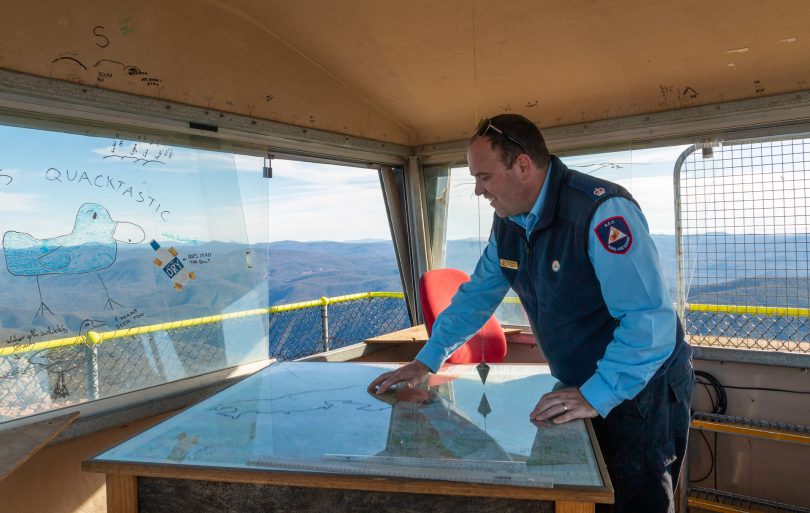
ANU research indicates investment in early fire detection can save billions of dollars and reduce bushfire risk. Photo: File.
Research into earlier detection of bushfires within a 30-minute response time has determined it would save the economy $8.2 billion, according to new modelling from the Australian National University (ANU).
The research examines how much money would be saved under various fire detection scenarios between 30 minutes and 60 minutes, while also accounting for a potential increase in bushfires due to climate change.
Study co-author Professor Nicholas Biddle said investing in early fire detection had the potential to offer a powerful and practical tool to reduce bushfire risk, particularly in the context of climate change.

The Orroral Valley bushfire burns south of Tharwa, near Canberra, in February this year. Photo: Thomas Lucraft.
“Despite the importance of climate change to the current and future distribution of fires in Australia, Australia can only make a small contribution alone, and policy returns are likely to be far into the future,” he said. “Other strategies are also needed.
“Research shows one of the key predictors of whether a fire turns into a large and costly fire is the time between ignition and first attack response.”
While the figures in the research don’t factor in a potential increase in fires due to climate change, the study’s other co-author, Professor Matthew Gray, said bushfires were likely to cost the Australian economy up to $1.1 billion per year between now and 2049.

Fire spotter Chris Condon at the Coree Fire Tower between Tidbinbilla and Brindabella. Photo: Dominic Giannini.
The modelling also shows that earlier fire detection which reduces bushfire risk would have significant economic benefits across a range of scenarios.
Under a scenario that sees no increase in bushfires due to climate change, a 30-minute reduction in detection time of large fires saves $2.6 billion, while a 60-minute reduction in detection time saves $5.7 billion (in 2019 dollar values). This increases to $7.5 billion if all fires are responded to within 30 minutes.
Under a moderate climate change scenario, which sees a 15 per cent increase in fires, a 30-minute reduction in detection time saves $2.7 billion, while a 60-minute reduction in detection time saves $6 billion (in 2019 dollar values). This increases to $8.2 billion if all fires are responded to within 30 minutes.
Professor Biddle said investing in early detection of bushfires has the potential to help meet a number of significant challenges.
“The sparse geographic distribution of populations in Australia also means that fires may not be detected in sufficient time to deploy resources before they reach a size that makes them uncontrollable, particularly without significant investment in remote detection resources,” he said.
The research was published by the ANU Centre for Social Research and Methods and is supported by Fireball International, the developers of real-time mapping and fire detection.













